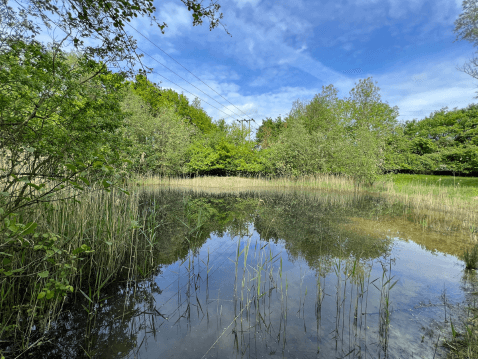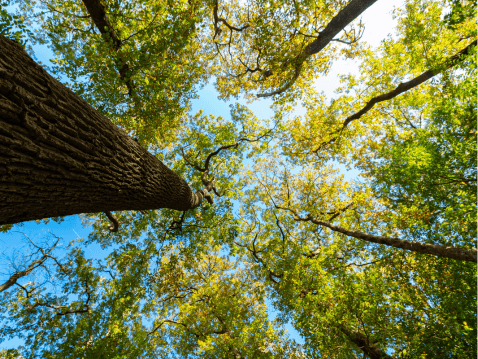Our journey to achieving Net Zero
As part of our ambition to be the most environmentally and socially responsible Distribution Network Operator (DNO) and in response to feedback from our stakeholders, We have taken a lead in carbon reduction within our industry. We are the first UK DNO to have its carbon reduction plan and targets externally verified by the Science Based Targets initiative (SBTi). In line with the Paris Agreement we have set targets to reduce our emissions to limit the global temperature increase to well-below 2 degrees Celsius and have included our scope 3 supply chain emission in this target. We have also set tougher reduction targets on our own directly controllable emissions by establishing our pathway to achieving Net Zero by 2028.

Our journey to achieving Net Zero
As part of our ambition to be the most environmentally and socially responsible Distribution Network Operator (DNO) and in response to feedback from our stakeholders, We have taken a lead in carbon reduction within our industry. We are the first UK DNO to have its carbon reduction plan and targets externally verified by the Science Based Targets initiative (SBTi). In line with the Paris Agreement we have set targets to reduce our emissions to limit the global temperature increase to well-below 2 degrees Celsius and have included our scope 3 supply chain emission in this target. We have also set tougher reduction targets on our own directly controllable emissions by establishing our pathway to achieving Net Zero by 2028.
Our Environmental Action Plan
Climate change is one of the greatest challenges of our time and our actions are crucial to make progress in addressing this challenge. Our Environmental Action Plan has been developed to provide us with a roadmap for achieving net zero and ensuring our own business is sustainable.
We have defined four strategic goals in collaboration with our customers and stakeholders. Under these four pillars we have formed specific, measurable commitments to our customers.

Our Environmental Action Plan
Climate change is one of the greatest challenges of our time and our actions are crucial to make progress in addressing this challenge. Our Environmental Action Plan has been developed to provide us with a roadmap for achieving net zero and ensuring our own business is sustainable.
We have defined four strategic goals in collaboration with our customers and stakeholders. Under these four pillars we have formed specific, measurable commitments to our customers.
Our four pillars
In creating our strategy to deliver an environmentally sustainable network we have developed four pillars:
- Carbon
Decarbonisation in line with our verified Science Based Target - Waste and Resources
Reducing our impact on the world’s limited resources - Biodiversity
Increasing natural diversity - Pollution
Reducing pollution produced by our business operations and network activity.

Our four pillars
In creating our strategy to deliver an environmentally sustainable network we have developed four pillars:
- Carbon
Decarbonisation in line with our verified Science Based Target - Waste and Resources
Reducing our impact on the world’s limited resources - Biodiversity
Increasing natural diversity - Pollution
Reducing pollution produced by our business operations and network activity.
We have set ourselves stretching, achievable and measurable targets outlined below.
Our Environmental Action Plan will be reviewed annually to ensure our work continues to meet our customers’ evolving expectations, that our response is based on the latest science and that we incorporate any emerging best practice.
We have set ourselves stretching, achievable and measurable targets outlined below.
Our Environmental Action Plan will be reviewed annually to ensure our work continues to meet our customers’ evolving expectations, that our response is based on the latest science and that we incorporate any emerging best practice.
Our commitments and targets
Carbon
Our commitments:
- For our full carbon footprint, including losses and indirect scope 3 emissions, we will exceed our reduction target approved by the Science Based Targets initiative (SBTi) at Well Below 2 °C. We will commit to the Business Ambition for 1.5°C SBTi campaign. We will report our progress through our Annual Environmental Report and update our targets in line with SBTi protocols.
- We will reduce our directly controllable emissions (scope 1 & 2, excluding losses) exceeding a 1.5°C reduction trajectory and offset any remaining residual emission to achieve Net Zero by 2028 using high quality verified offsets. We will report our progress through our Annual Environmental Report.
- As part of our verified Science Based Target, we will work with our suppliers to reduce our supply chain carbon emissions (scope 3) by 25% by 2028, compared to a 2018/19 baseline. We will report our progress through our Annual Environmental Report
Carbon
Our commitments:
- For our full carbon footprint, including losses and indirect scope 3 emissions, we will exceed our reduction target approved by the Science Based Targets initiative (SBTi) at Well Below 2 °C. We will commit to the Business Ambition for 1.5°C SBTi campaign. We will report our progress through our Annual Environmental Report and update our targets in line with SBTi protocols.
- We will reduce our directly controllable emissions (scope 1 & 2, excluding losses) exceeding a 1.5°C reduction trajectory and offset any remaining residual emission to achieve Net Zero by 2028 using high quality verified offsets. We will report our progress through our Annual Environmental Report.
- As part of our verified Science Based Target, we will work with our suppliers to reduce our supply chain carbon emissions (scope 3) by 25% by 2028, compared to a 2018/19 baseline. We will report our progress through our Annual Environmental Report
Carbon
Our commitments:
- For our full carbon footprint, including losses and indirect scope 3 emissions, we will exceed our reduction target approved by the Science Based Targets initiative (SBTi) at Well Below 2 °C. We will commit to the Business Ambition for 1.5°C SBTi campaign. We will report our progress through our Annual Environmental Report and update our targets in line with SBTi protocols.
- We will reduce our directly controllable emissions (scope 1 & 2, excluding losses) exceeding a 1.5°C reduction trajectory and offset any remaining residual emission to achieve Net Zero by 2028 using high quality verified offsets. We will report our progress through our Annual Environmental Report.
- As part of our verified Science Based Target, we will work with our suppliers to reduce our supply chain carbon emissions (scope 3) by 25% by 2028, compared to a 2018/19 baseline. We will report our progress through our Annual Environmental Report
Carbon
Our commitments:
- For our full carbon footprint, including losses and indirect scope 3 emissions, we will exceed our reduction target approved by the Science Based Targets initiative (SBTi) at Well Below 2 °C. We will commit to the Business Ambition for 1.5°C SBTi campaign. We will report our progress through our Annual Environmental Report and update our targets in line with SBTi protocols.
- We will reduce our directly controllable emissions (scope 1 & 2, excluding losses) exceeding a 1.5°C reduction trajectory and offset any remaining residual emission to achieve Net Zero by 2028 using high quality verified offsets. We will report our progress through our Annual Environmental Report.
- As part of our verified Science Based Target, we will work with our suppliers to reduce our supply chain carbon emissions (scope 3) by 25% by 2028, compared to a 2018/19 baseline. We will report our progress through our Annual Environmental Report
Behind each of our commitments is a set of costed, deliverable activities that demonstrate our commitment in response to customer priorities on the environment. In total, our Environmental Action Plan includes £31.5m of operational actions to reduce our carbon footprint and improve biodiversity.
Further details of our commitments are available in our ED2 Business Plan: Chapter 11 Delivering an environmentally sustainable network.
Behind each of our commitments is a set of costed, deliverable activities that demonstrate our commitment in response to customer priorities on the environment. In total, our Environmental Action Plan includes £31.5m of operational actions to reduce our carbon footprint and improve biodiversity.
Further details of our commitments are available in our ED2 Business Plan: Chapter 11 Delivering an environmentally sustainable network.
ISO 14001:2015 Certificated
This certificate provides a level of assurance that UKPN works in alignment to international best practice standards and criteria associated to an Environmental Management System. It assists us in managing environmental risks and impact by continually improving our processes and performance.
Our Green Tariff
Since January 2018 all of our purchased electricity used in buildings and substations has been on a 100% renewable tariff.
